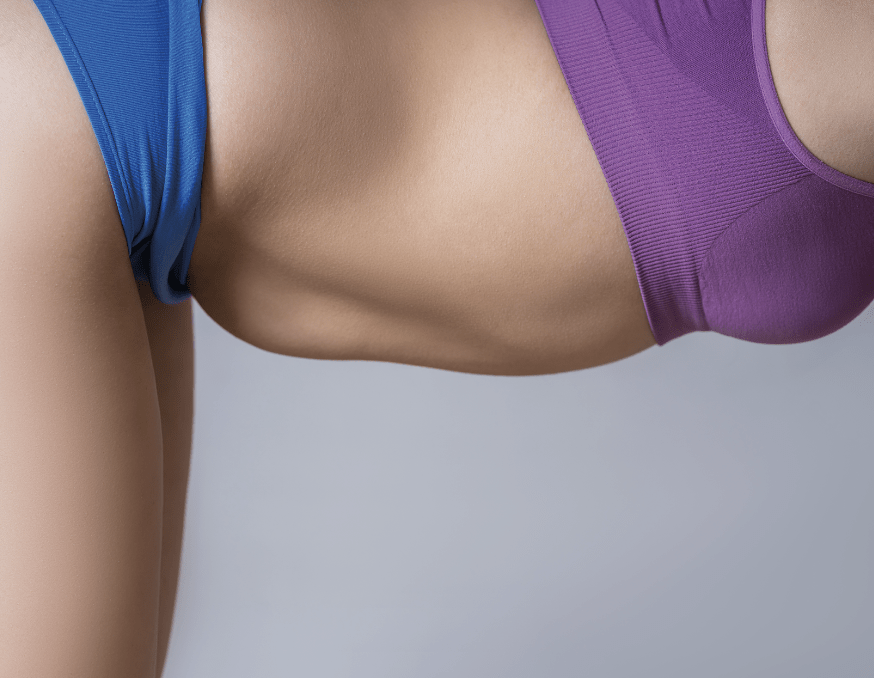Significant weight loss, pregnancy, and childbirth can cause skin to relax as a result of pregnancy hormones, and the “6 pack” abdominal muscles may separate. You can also end up with an unwelcome buildup of back and hip fat.
The majority of people opt for tummy tuck surgery since diet and exercise are unable to address these problems. Abdominoplasty, sometimes known as a “tummy tuck,” is a procedure that flattens the stomach region by removing excess belly fat and tightening sagging skin so that it lies taut and smooth. Dr. Shahram achieves this by tightening the abdominal muscles and removing extra skin and fat. The back and hips are frequently treated with liposuction as well, giving the waist a finely contoured appearance.
There are numerous abdominoplasty techniques available, and procedures can be customised to a patient’s preferences and requirements. However, in general, tummy tucks are performed to remove extra skin, undesirable scars, stretch marks, and fat, as well as to tighten the abdominal muscles.
The ideal patient has a normal weight, especially if they were overweight before and have already shed the extra pounds. Abdominoplasty is not a procedure for those who are obese or who are making an effort to lose weight. Abdominoplasty can have a very noticeable effect in the right patients and is linked to high patient satisfaction.
What surgery is available, and what techniques are involved?
FULL ABDOMINOPLASTY
The most frequent operation for patients who have severe skin laxity, extra fat, and muscle separation is a traditional stomach tuck. An incision is made around the umbilicus and from hip to hip during the procedure. The superfluous skin and fat are removed all the way up to the pubic hair from the umbilicus. Tightening occurs in the muscles above and below the umbilicus. The skin is then stitched back together, leaving a long scar across the lower abdomen and a circular scar around the umbilicus. Although it leaves a noticeable scar, this procedure does result in the best improvement in abdominal form.
Patients who are considering getting pregnant should postpone having this operation until they are certain they will not be having any more children.
MINI ABDOMINOPLASTY
Less invasive abdominoplasty procedures might be suitable for patients with minimal skin excess. There is still a requirement for a general anaesthetic. Skin and fat from the lower abdomen are removed during surgery, creating a horizontal scar over the pubic hair. On occasion, the muscles will also get more tense. The umbilicus, which may be slightly expanded to take on a different shape, is left without any scarring. Compared to a full abdominoplasty, a little abdominoplasty will have a less dramatic result.
LIPOSUCTION
Sometimes an abdominoplasty can be combined with liposuction. However, for younger individuals with good-quality, elastic skin whose main issue is a localised excess of fat, liposuction can be advised instead of an abdominoplasty.
CUMMERBUND LIPO ABDOMINOPLASTY
For more natural results, a faster recovery period, and the nicest scars, Dr. Shahram frequently combines liposuction with abdominoplasty. He also handles the muscles and elevates and tightens the fascia of the lower abdomen like a cummerbund. Cummerbund lipo-abdominoplasty is what he calls it.
The optimal time to undertake any of the surgical procedures covered in this quick guide is when the patient is physically fit and healthy. Prior to having an abdominoplasty, there is no special diet or exercise regimen needed, although you should be close to your optimum weight. You will likely have some drains and bandages on your stomach following a full abdominoplasty (plastic tubes attached to suction bottles). Usually, the drains will be taken out before you return home. With these methods, post-operative discomfort is easily managed. Patients will be mobile right away and should be able to resume their regular workout regimen in six weeks.
It is advised that patients take at least four weeks out of work right following surgery to guarantee a thorough recovery. These times are an estimate and depend on the specifics of the procedure; also, some persons recover more quickly than others. All abdominoplasties leave some scarring, albeit the type of scars will vary depending on the method. Scars typically start out quite red and elevated, changing over the course of the next six months or so, and eventually going from red to white. Over time, the majority of patients develop scars of acceptable quality, but periodically and sporadically, some patients get red, lumpy scars that do not get better.
To learn more about Tummy Tuck procedure, please visit our dedicated page: Best Tummy Tuck Dubai
To learn more about Mini Tummy Tuck procedure, please visit our dedicated page: Mini Tummy Tuck Dubai

